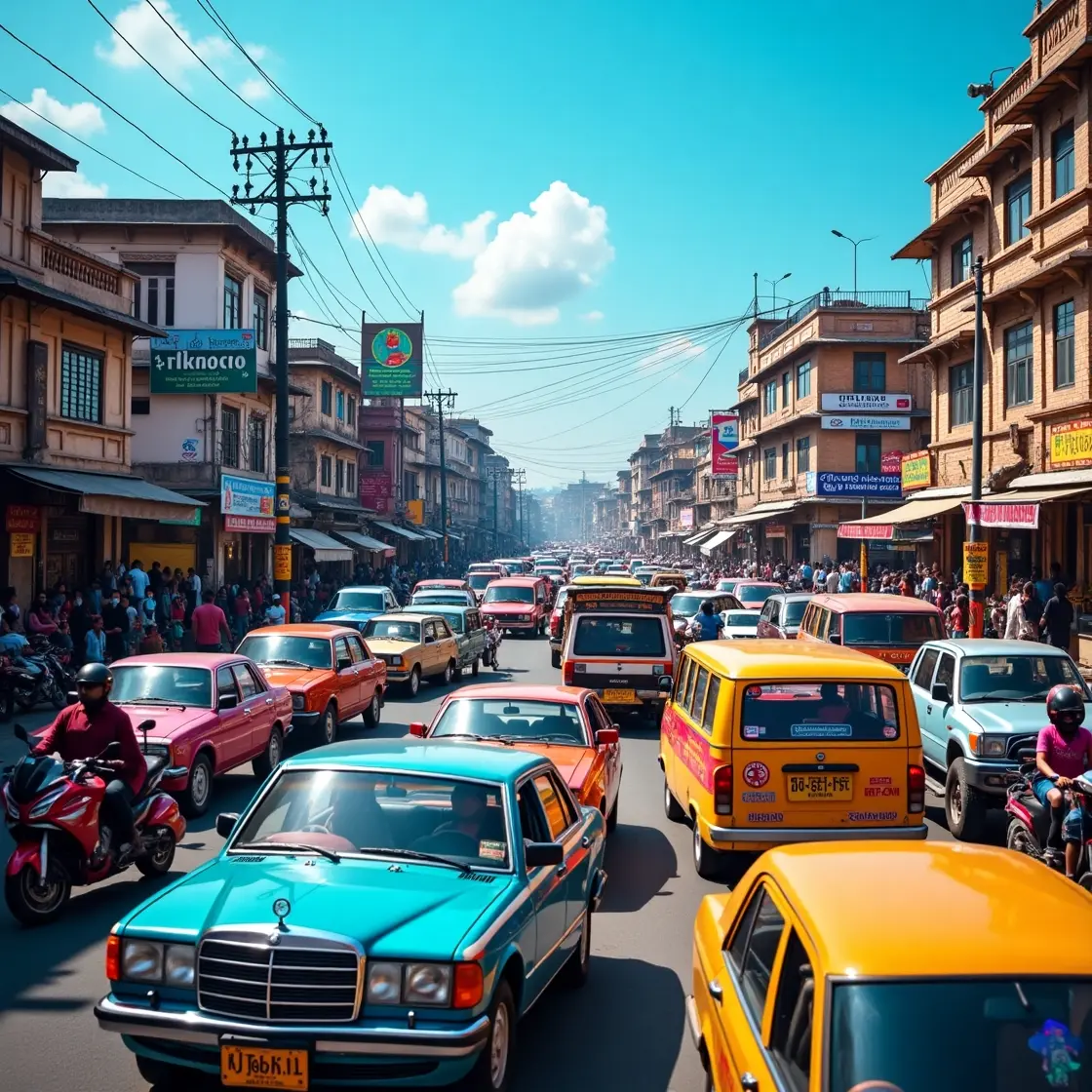I. Introduction
Kathmandu’s Ring Road is the main arterial route encircling the capital city of Nepal.
It plays a vital role in connecting major urban areas and distributing traffic flow.
With rising population and urbanization, traffic on the Ring Road has become a serious concern.

II. Structure and Coverage of the Ring Road
Kathmandu’s Ring Road stretches approximately 27 kilometers, forming a loop around the core urban area.
It passes through several key points including Kalanki, Koteshwor, Balaju, Maharajgunj, Gaushala, and Satdobato.
The road is designed as a dual carriageway in some sections and single-lane in others.
Recent expansions by the Chinese government have widened portions like the Kalanki-Koteshwor stretch, but full-scale development is still pending.
This section provides a structural overview for readers unfamiliar with the layout.
III. Current Traffic Conditions
The Ring Road experiences heavy traffic congestion, especially during peak hours (8–10 AM, 4–7 PM).
Main causes include:
- High volume of vehicles (private cars, motorbikes, buses, microbuses)
- Poor lane discipline and traffic violations
- Lack of effective signal systems
Kalanki and Koteshwor are among the most congested junctions.
In contrast, some stretches like Balaju to Maharajgunj are smoother during off-peak times.
This section highlights the general and location-specific traffic flow status.
IV. Major Challenges
Several critical issues worsen the traffic situation:
- Overcrowding: Public vehicles stop frequently, blocking lanes.
- Encroachments: Street vendors and illegally parked vehicles reduce road width.
- Poor road maintenance: Potholes, unfinished construction, and inadequate drainage lead to traffic jams.
- Inadequate infrastructure: Lack of dedicated lanes for buses, bikes,
and pedestrians.
This section explains the root causes of inefficiency and road usage problems.
V. Impact on Commuters and Residents
Traffic congestion affects all aspects of daily life:
- Delays in reaching offices, schools, and hospitals
- Increased expenses due to fuel wastage during idling
- Higher risk of accidents due to reckless driving and narrow lanes
- Mental stress and health issues linked to long commute
times and pollution
This part shows how traffic on the Ring Road is more than an infrastructure issue—it affects quality of life.
VI. Government Efforts and Road Projects
The government has taken several steps to ease Ring Road traffic:
- Widening projects: Kalanki-Koteshwor expansion
- Flyovers and underpasses: Kalanki underpass is complete; others proposed
- Smart traffic lights and CCTV surveillance in select intersections
- Traffic rule enforcement: Crackdowns on illegal parking and lane
discipline
Despite efforts, implementation gaps and delays remain a challenge.
This section covers the official response and infrastructure upgrades.
VII. Public Feedback and Recommendations
Many residents feel frustrated with the slow pace of improvement.
Common suggestions include:
- Better public transportation to reduce private vehicle usage
- Strict law enforcement for traffic violations
- Creating dedicated lanes for buses and bikes
- Improved traffic signage and pedestrian infrastructure
This section captures the voice of the public and expert recommendations for sustainable improvement.
VIII. Conclusion
The traffic situation on Kathmandu’s Ring Road is a symptom of rapid urban growth without matching infrastructure planning.
Unless addressed with urgency, congestion will continue to cost the city in terms of time, money, and health.
Improving road conditions, enforcing rules, and investing in public transport are key to making Ring Road safer and more efficient.